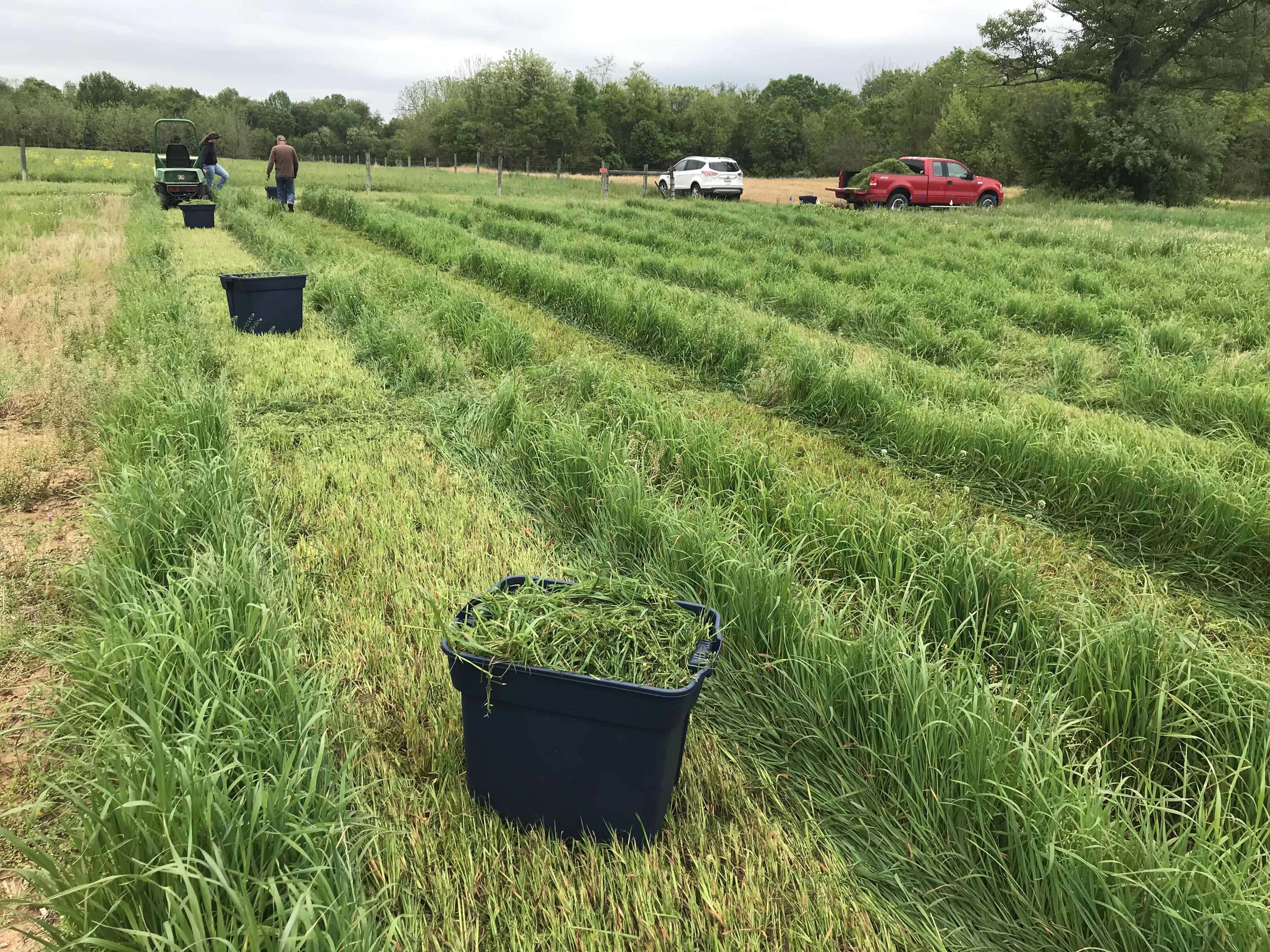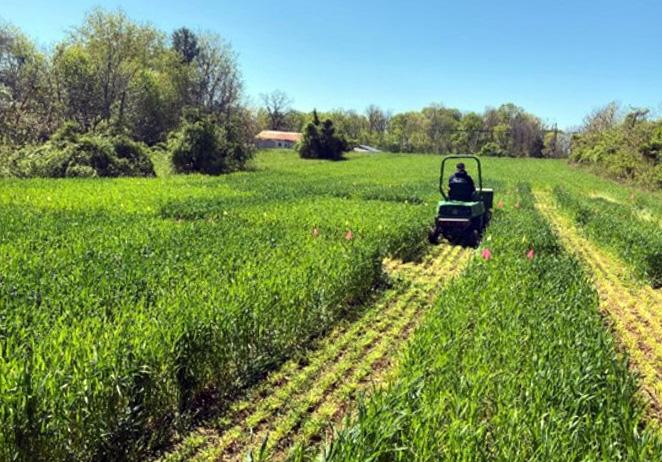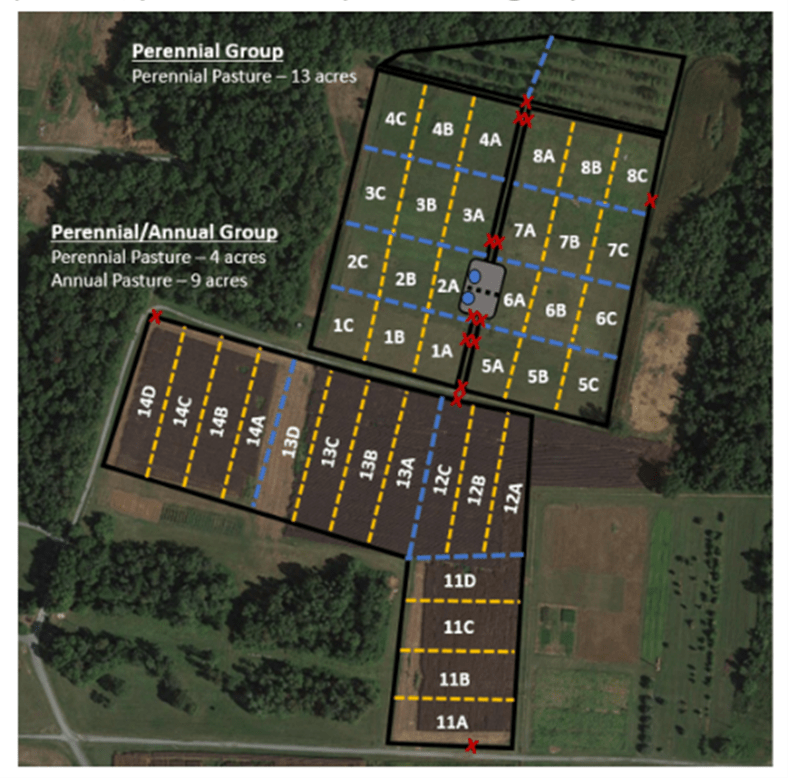Additional updates for ongoing forage-related research projects:
A Comparison between Perennial and Perennial/Annual Combination Forage Systems under Mixed-Species Grazing
Livestock producers are increasingly interested in including annual forages along with perennials in forage systems for grass-fed livestock. Annual forages can be a quick-growing, high-quality, and high-yielding forage option and can increase forage availability across the growing season; however, establishing annual forages does require additional time and financial inputs. To explore this, a study was started at the Western Maryland Research and Education Center to compare a perennial-only versus a perennial/annual combination forage system under mixed-species grazing. The objectives of the study are to compare forage production, forage quality, livestock performance, and soil health between these grazing systems, along with the economic feasibility of using a perennial/annual combination system compared to a more traditional perennial-based forage grazing system.
- Research Update: A Comparison between Perennial and Perennial/Annual Combination Forage Systems under Mixed-Species Grazing
Dr. Amanda Grev, Forage Extension Specialist and Jeff Semler, Agriculture Extension Educator
Performance of Dairy Heifers on Pasture Relative to TMR-fed Counterparts
This study was conducted to investigate the effects of improved grazing management on short- and long-term dairy heifer performance. The objectives were to determine the effect of improved grazing management on heifer growth characteristics, as well as the economic feasibility of using a rotational grazing system to mitigate costs associated with the replacement program. Heifers were managed under an intensive grazing system, which utilized a combination of annual and perennial pastures, and were compared to heifers managed under a conventional, TMR-based system.
- Research Update: Performance of Dairy Heifers on Pasture Relative to TMR-fed Counterparts
Dr. Amanda Grev, Forage Extension Specialist; Dr. Sarah Potts, Former Dairy and Beef Extension Specialist; and Jeff Semler, Agriculture Extension Educator
Effects of Nitrogen and Sulfur Fertility on Triticale Forage Protein Concentrations and Dairy Cow Performance
Many producers recognize the value of winter forages like triticale as a high yielding and high quality forage crop for feeding livestock. The objectives of this study are to investigate the effect of increasing nitrogen fertility rates with and without sulfur on triticale forage to determine 1) the effects on forage yield, 2) if using a higher fertilization rate will the increase the value of the forage through increased protein concentrations, and 3) the resulting implications of incorporating that forage into the ration for lactating dairy cattle.
- Research Update: Effect of Soil Fertility on Triticale Yield and Quality
Dr. Amanda Grev, Forage Extension Specialist; Dr. Sarah Potts, Former Dairy and Beef Extension Specialist; and Jeff Semler, Agriculture Extension Educator
Effect of Energy Supplementation on Growth, Health, and Carcass Traits of Pasture-Raised Lambs
Energy is often one of the most limiting nutrients in the diets of pastured livestock, especially for young, growing animals. As a result, the objective of this research project was to determine if energy supplementation in the form of whole barley would improve the health, growth, and carcass characteristics of pasture-raised lambs.
Visit the small ruminant research blog for regular updates and preliminary results on this project.

Maryland Forage Variety Trials
Looking for information on ongoing forage variety trials in Maryland? Visit our 'Forage Variety Trials' page for additional details!

